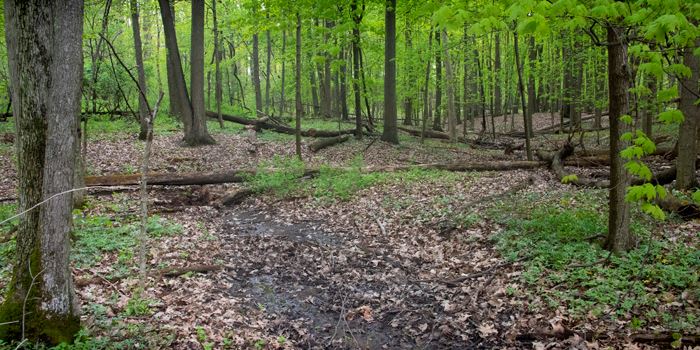Finding the Battlefield

As we celebrate parks recreation month in July, Metroparks is proud to share a little history of our amazing park district and how some of your favorite parks got their start.
By Shannon Hughes
The Fallen Timbers Battlefield was unintentionally one of the best kept secrets for almost 200 years.
Many people believe history is static, that if it happened in the past, we certainly know everything there is to know about it. But Fallen Timbers can teach us a lot about the need to continue to search for the truth in events that happened hundreds of years ago. It can also teach us the significance of a community coming together to preserve land.
Arguably one of the top three definitive battles in American history, it is also one of the most overlooked.
Fallen Timbers Battlefield is situated in the heart of the Maumee River Valley—part of the largest watershed in the Great Lakes system. It would have also been an area rich in soil, timber and critters (beaver, muskrat, mink etc). For thousands of years it was home to Native tribes—some of the earliest being the Woodland groups. These groups would give way to Algonquin and Iroquois tribes in the 1600s.
By August 20, 1794 it would become the site where the powerful Western Confederacy would make its final stand against the newly formed American Legion of the United States. Both fighting forces were formidable in their own right—the Western Confederacy lead by Chiefs Little Turtle, and Tarhe, with War Chiefs Blue Jacket and Buckongahelas, had been militarily dominating the Northwest Territory against the Americans.
However, the Legion led by General Anthony Wayne was better prepared, better led and ready for the warriors fighting tactics.
The battle lasted 2 hours with 45 minutes of sustained, heavy fighting taking place between the 1st and 3rd and 2nd and 4th sublegions and warriors from the Wyandotte, Delaware, Chippewa, Ottawa, Pottawatomi, Mingo, Shawnee, Miami, Kickapoo and Wea. When the Wyandotte and their Canadian allies were the last to leave the field of battle, the Americans were declared victorious. This paved the way for the Treaty of Greenville in 1795 and legal westward expansion by American settlers into previously held Indian Territory.
Finding the Battlefield
Historians always knew the battle occurred, but what they didn’t know was the exact location. In fact, for over 200 years the battle was thought to have occurred miles away on a floodplain located off of presdent day US Rt 24 overlooking Side Cut Metropark. Thanks to the tenacity of Dr. G Micheal Pratt, numerous volunteers and ground penetrating radar, the actual location of the battlefield was discovered in 1995.
Four years later in 1999, the site was officially recognized as a National Historic Site by an act of Congress. However, the road to that designation was as bumpy as the march over downed logs in 1794 would have been. It took many citizens and organizations to come together to stop the development of the land into a commercial district.
Today Fallen Timbers Battlefield Metropark helps inspire a reverence for historical and natural preservation and those who fought for this land.
Object reference not set to an instance of an object.
Object reference not set to an instance of an object.
Photos: Top: the Battlefield today is a nice place for a walk in the woods to reflect on the rich history of the land. Above: Dr. Pratt; volunteers during a citizen archaeology initiative on the property in the 1990s.